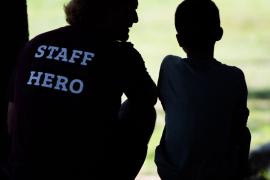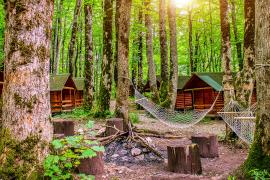Employers are “observing a lack of critical soft skills such as communication, creativity, collaboration, and critical thinking” in today’s youth (Pace, 2012). Really? Schools are more rigorous than ever. What is missing? What has changed over the generations?
In the past, there were no classes on collaboration or tests on conflict management and other soft skills. The question perhaps should be, “How did previous generations learn these skills?” Research shows that children in the past were allowed to develop these skills naturally through play. Peter Gray, a research professor in the Department of Psychology at Boston College, contends in his book Free to Learn that children “learn how to make decisions, solve problems, exert self-control, and follow rules” when allowed to be in control of their free time and playtime (p. 454). One might then conclude that because children in past generations were afforded less structured playtime, they gained valuable soft skills necessary for future success. The decline of free-neighborhood play and the trend of fewer children per family has possibly deprived today’s children of learning important life skills.
The Old Neighborhood Taught Today’s Missing Skills
I use the term “old neighborhood” to describe the communities in which people who were children twenty years ago (or earlier) lived. The old neighborhood was a place where kids were free to play from the time they finished chores until they were called inside for dinner. It was a community in which children were free of adults, played in mixed-age groups, and made up the rules to the games they played. In essence, they had control over how they spent their afternoon. This old neighborhood has different meanings to different people, depending on their social class or where they grew up. However, many with memories of those old neighborhoods share a similar experience of play free from adults telling them what to do. This took place in suburbs, the countryside, and cities.
Today, children play video games that mimic real activities, such as Wii baseball, or have pretend adventures to save a kingdom in front of a television screen. Twenty years ago, children were actually outside playing together — practicing the very skills that they would need later in life; skills that, according to experts, this current generation seems to be lacking. Children in the past had to negotiate and to communicate. There was not an adult to tell them what the rules of the pick-up baseball game or imaginary adventure would be. They were developing decision-making, conflict-management, and communication skills. Children became problem solvers when they made up the rules to their games and resolved problems that arose.
An Example
When I speak to adults, it does not take long for me to hear childhood stories that become examples of how play was an important part of learning soft skills that are essential for success. Until it is brought up in conversation, the adults I speak to do not consciously think of childhood as the foundation of the skills they possess today.
Consider the example of a pick-up game of football at recess or after school, which demonstrates how, when left to their own devices, children have the capacity to organize themselves and succeed in playing a game.
To get started, the group must agree on the boundaries of the field, how a touchdown is scored, and whether it is two-hand touch, one-hand touch, or all-out tackle. The last undertaking is the selection of teams. Often in the selection of the team, potential issues are discussed and negotiated: “We have Tom and he is only six and too young for tackling,” or “No fair! You have Jenny and she’s the fastest.” Other rules may emerge, such as “Tom always gets to be the kicker so he doesn’t have to get tackled,” or “Jenny plays offense for both teams.” Interestingly enough, most of the time, these rules are ironed out so everyone agrees — without an adult. Once the game is in play, children must judge, “Was that really a touchdown?” They must decide if, due to some unforeseen circumstance, a “do over” is actually necessary.
In the old neighborhood, pick-up games like these were common. Today, they are much rarer.
Age-Mixed Playing
Play in the old neighborhood also included children of a variety of ages. In most cases, the children did not play solely with children of their same age. Gray studied the benefits of what he calls “age-mixed playing” in school-aged children who were allowed to play and interact with children of all ages. He writes in a 2011 article for the American Journal of Play that “Experience with younger children provides older children and adolescents with opportunities to be the mature ones in relationships and thereby practice nurturance and leadership” (p. 514).
He also explains that younger children who play with older children tend to “play up” to the level of the older children: They mimic the ideas and strategies that older children use when playing. Young children who play with children of mixed ages are able to problem solve in ways that are more sophisticated than what they are developmentally capable of if left on their own or playing with children of their same age (Gray, 2013). Too often, we group all the children in our care by age. While in some circumstances this may be necessary and beneficial, what prevents us from mixing ages and reaping the benefits of having a variety of ages together?
Camp as the Old Neighborhood
Camps are committed to creating communities. Each season, session, and summer, our profession creates a unique community, and more often than not, the people in charge are youth themselves. This models an opportunity for mixed-age play. Camps are in an incredible position to provide environments and “circumstances that allow each child to fully reap the advantages associated with play” (Ginsburg, 2007). There are some who see camps as old-fashioned, but the profession as a whole has worked hard to show its relevance and to move into the twenty-first century. The truth is there has never been a better time for children to go to camp.
The camp setting emulates a neighborhood with its cabins, tents, or camp groups. The camp allows kids to play until mealtime when we all come in together to talk about our day. Camp can be a place where children initiate the play — children decide what to play and how to play it. Amid the wonderful adult-organized activities, camps are places we can remember to have free time for creative and impromptu learning.
In those moments at camp where adults are “in charge,” encourage the adults at your camp to listen and follow the campers’ lead. Table 1 (below) shows four ways to create old neighborhood lessons at camp.
Table 1. Four Ways Camps Can Create Old Neighborhood Lessons
| Negotiation / conflict management | Allow campers to spend time discussing and even arguing. Pay attention and make sure that things do not get physical or that bullying is not taking place, but don’t automatically step into situations where campers are upset with each other. Allow them to practice their negotiation and problem-solving skills. If the children seem to be at a stalemate or things are getting heated, ask, “Is there something I can do to help you solve the problem?”* |
| Imagination / creativity / decision making | Allow children free time to decide what they will do. Even if it is “nothing.” Sometimes “nothing” allows for self-reflection and thoughtfulness. Being bored is not a problem — it can foster curiosity. Have the kids make up the rules for a game. Even better, allow for free time where they make up the game or decide how to play it. Let the play and games be child-led. |
| Problem solving | When something happens to prevent an activity from happening in the manner it was planned, ask the campers what should be done to fix the issue. |
| Leadership | When appropriate for the activities, mix up the ages. Allow children to learn from each other. |
*Note: To be sure, there were fistfights, bullying, and other issues when children played by themselves in the old neighborhood, but this is where camps have an incredible advantage to create environments of positive conflict resolution.
A Neighborhood
Going to camp is more important for children now than it ever has been. Camps offer children something that has long since disappeared from our communities: a neighborhood. This neighborhood may no longer exist in very many towns or cities around the country, but I believe it does exist at camp: a place where children interact with children of all ages, and the person in charge very likely may not be over twenty-one years old; a place where children can still make up the rules to a game they’ve just invented; a place where play is valued.
Camp creates a safe neighborhood for millions of children to become independent and confident in their own abilities to control themselves and to contribute in a way they may not be able to do in their neighborhood at home. Camp is this generation’s neighborhood to play, learn, and explore in ways they can develop decision making, conflict management, and leadership skills.
|
Additional Resources Barnes, C. (2010). The paranoid parents guide: Worry less, parent better, and raise a resilient child. Florida: Health Communications, Inc. Ginsburg, K. R. (2011, 2006). Building resilience in children and teens. Illinois: American Academy of Pediatrics. Gray, P. (2011). The decline of play and the rise of psychopathology. American Journal of Play, 3(4), 443-463. Levine, M. (2012). Teach your children well. New York, NY: HarperCollins. Mendoza, J.A., Watson, K., Baranowski, T., Nicklas, T.A., Uscanga, D.K., & Hanfling, M.J. (2011). The walking school bus and children’s physical activity: A pilot cluster randomized controlled trial. Pediatrics, 128; e537. (DOI: 10.1542/peds.2010-3486) The Conference Board, Corporate Voices for Working Families, Partnership for 21st Century Skills, Society for Human Resource Management. (2006 October 2). Are they really ready to work? Employers’ perspectives on the basic knowledge and applied National Center for Missing and Exploited Children. (n.d.) Fast facts. Retrieved from www.missingkids.com United States Department of Transportation. (2003, 2010). Traffic safety facts. National Center for Statistics and Analysis. Retrieved from www.nrd.nhtsa.dot.gov National Cancer Institute. (2008 January 10). Childhood cancers fact sheet. Retrieved from www.cancer.gov/cancertopics/factsheet/Sites-Types/childhood |
References
Ginsburg, K R. (2007). The importance of play in promoting healthy child development and maintaining strong parent-child bonds. Pediatrics, 182-189.
Gray, P. (2013). Free to learn. New York, NY: Basic Books.
Gray, P. (2011). Special value of children’s agemixed play. American Journal of Play, 3(4), 500-522.
Pace, A. (2012). Preparing today’s youths for tomorrow’s workplace. T+D, 66(12), 42-46.
Jolly Corley, MS, is a camp director at Camp Robindel. She is an educator with a particular interest in helping organizations create opportunities to encourage professional and personal growth. Contact: [email protected].
Originally published in the 2014 January/February Camping Magazine



